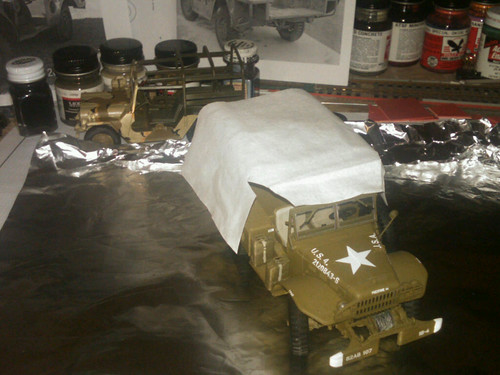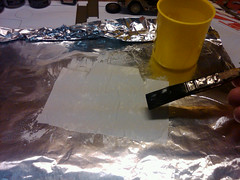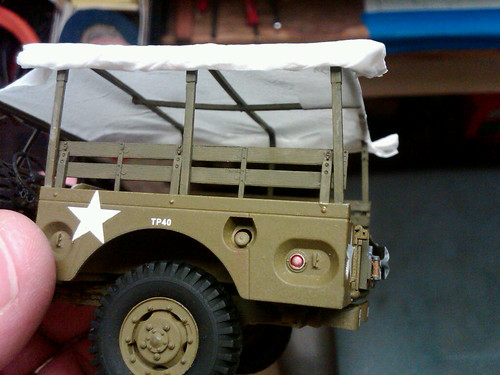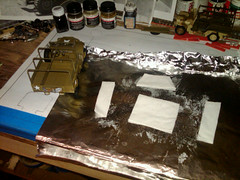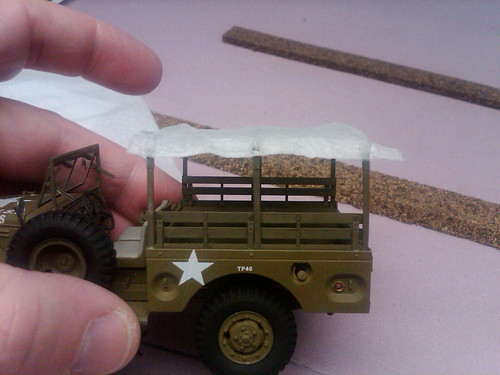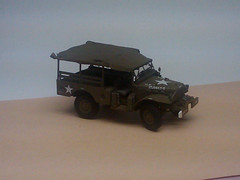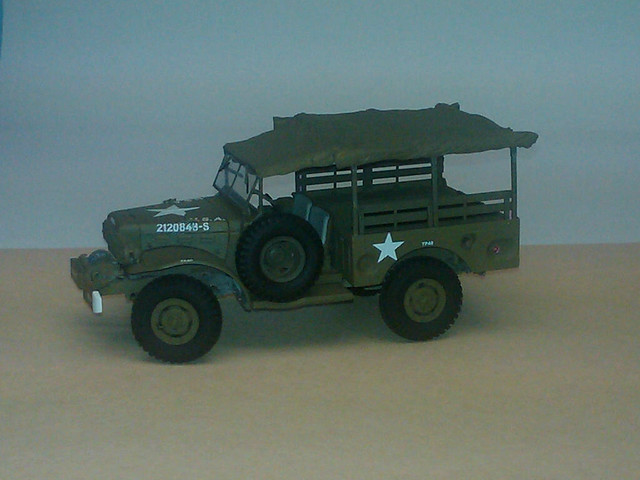Sean;
Looks really good, so far!
BTW, when I said "frame", I was meaning using that top frame such as your truck came with or has on it - as you did!
You've done all the right sorts of things. Now... a couple pointers BEFORE you get around to painting it (I hope!):
1) All the tarp / cover edges would be seamed or "beaded". (That is, in real life, the canvas would be rolled in a fold or 2 and stitched to form a tight edging. In some cases, this would have a piece of thin cord or rope inside to give it a little body. Probably not this, in your use-case.) You should edge your tarp... How to do this?
There are some options: None are real quick, but... You can 1) run a thin bead or line of PVA glue right along the edge to smooth and "close" it up, 2) make a separate small tarp piece that is flat, let this dry, and use the Exacto or scissors to cut very skinny strips out of this which you will then glue onto or along the outside (visible) edge of your tarp, 3) do about the same thing only using very thin (0.005) styrene sheet and strong cement - you cut a skinny styrene strip, fold in into a tiny trough (maybe using a PE folder or certes a metal straight edge), dip this in the cement, and "trough" the edge of your tarp. You then squeeze your styrene trough around the tarp tissue edge. IF you have soaked your styrene in cement, it will actually really soften and melt onto the tissue (which being paper will NOT melt away.

) and form a reinforcing edge.
AFTER you edge it you get to paint it!
2) Tarps and tops have seams as they were / are made of multiple pieces sewn together. So... maybe take a look at photos of tops and see where likely seams go, and do some version of above to create long skinny strips and glue onto the top for these seams...
3) Painting... I would say you should do as much as possible with your AB - you have already created a great-looking tarp - the color coat need not be very thick (you are not using the paint to make the tarp in your case). Try cutting some AL foil or some clean tissue to fully mask the insides of your truck, and then have at it with the AB under and top of that tarp. You may well have to touch up the frame pieces, but probably will escape messing your interior, etc.
Of course, as you have pointed out, the tarp has firmed up, and it should be strong enough to be gently brushed with a SOFT brush, should you prefer to do that. After you get the base tarp colour on, you should of course work on some fading and dust accums! And pigments (I actually prefer coloured chalk) really can add some zing to this.
One last thought for you... BEFORE you paint it - take a GOOD look at its surface texture. IF it looks pretty rough and fibrous, apply on some more glue and let it dry. This will help smooth it down a bit and will add strength.
From where I sit - you have things really in control, and it is going to look SWEET!
Cheers!
Bob.


